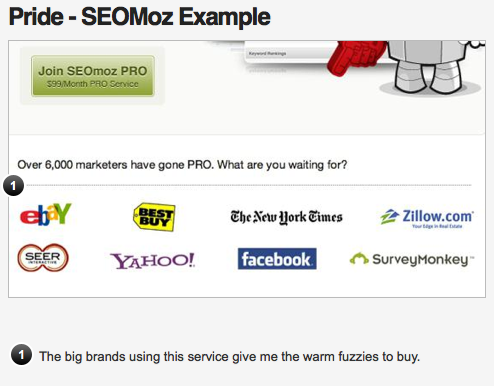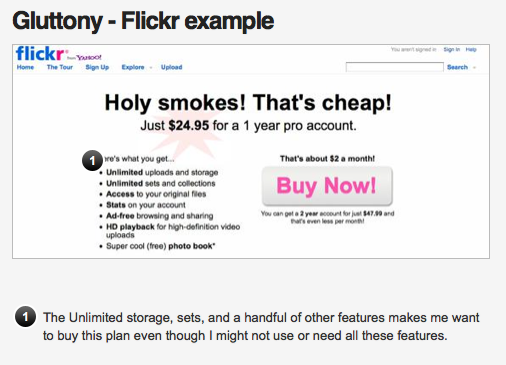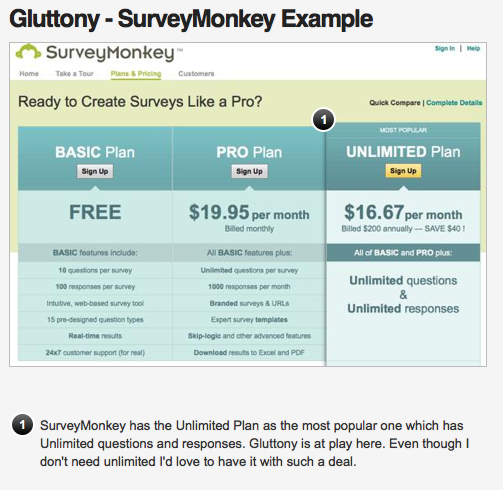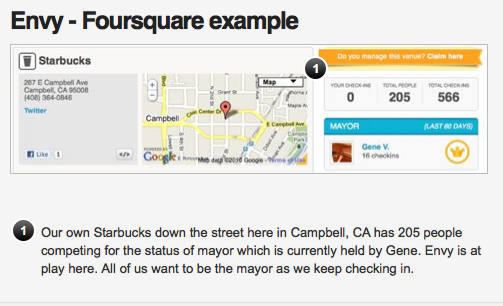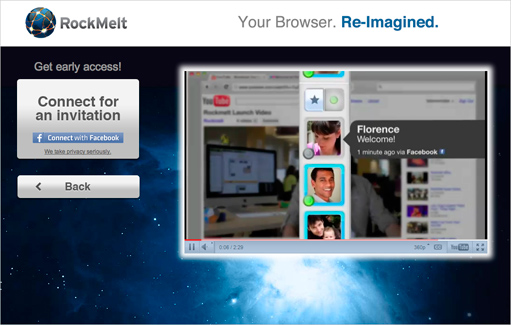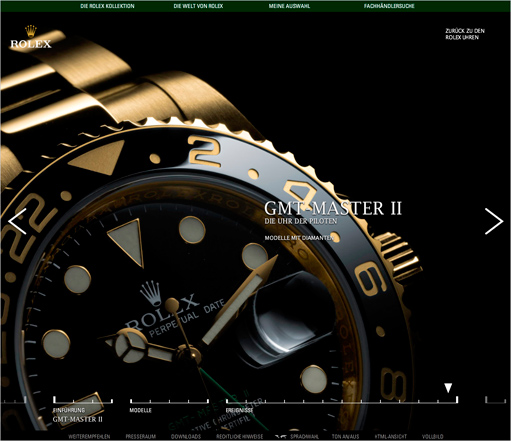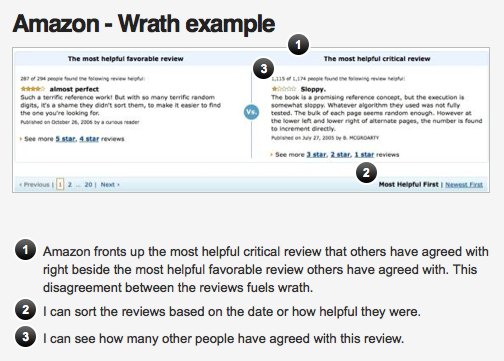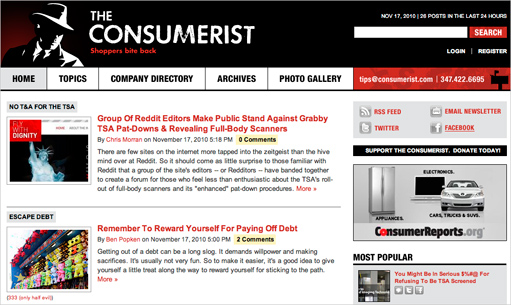How To Use the “Seven Deadly Sins” to Turn Visitors into Customers
In this article we’ll show examples of how successful companies exploit the tendency to conduct all the famous Seven Deadly Sins, and in turn generate momentum with their website visitors. Ready? Let’s roll.
Sin #1: Pride
Pride is defined as having an excessively high opinion of oneself. You must remember someone from your school days who had an extremely high sense of their personal appearance or abilities. That’s pride at work. On the Web, this sin will help you sell your product. Every website visitor wants to be associated with a successful service that other people might find impressive.
People want to say: “Yes, Fortune 500 companies use this tool and I use it as well,” or “Yes, I got on the homepage of Dribbble in front of thousands of other designers; that’s the type of work I do.” In all these examples, people are proud of their achievements and the website helps them show their pride. Here are examples of this first sin in action:
Showing off your customers. People want to use tools that big brands use. SEOmoz does a great job of fronting up the logos of famous companies that pay for their tools, with a simple call to action prompting you to be as successful as these top brands. This entices users to try this tool: “I want to use something big brands use.”
Full Interactive View | Summary view
Fronting up the top users. People want to be considered the best. You are proud to be nominated or picked to be the best. You brag about it to your friends. You mention your accomplishments to your significant other. You want to to be picked as the best one, over thousands of others. Dribbble fronts up top designs on their homepage. This forces people to use their website more and more, to get to the top. A little pride on your site just might get many more customers to use your service.
Full Interactive View | Summary view
Sin #2: Gluttony
Most people think of gluttony in terms of eating. However, the more generic definition of this sin is over-consuming something to the point that it is wasted. It’s a desire to consume more than you can possibly consume. On the Web, companies use this sin to seduce the user into signing up by promising an endless supply of goods.
How many times have you seen “Unlimited” as one of the motivators to get you to buy a tool or service? We are a consumer generation. We want more and more awesome functionality and coolness for our money. The more a website promises us for our money, the more likely you are to sign up. Here are examples of this sin in action:
Full Interactive View | Summary view
The unlimited gluttony of features for a cheap price drives people to sign up for a product or service. If you want to attract user’s attention, create a valuable offer and provide unlimited resources for customers to use or collect.
Full Interactive View | Summary view
Sin #3: Sloth
In the modern view, “sloth” means laziness and indifference. Let’s face it, some of us are extremely lazy by nature. If we don’t have to do something, we’d rather not do it. On the Web, this sin is seen as making tasks overly simple and easy for potential customers. Products and services which “do all the hard work for you” win customers over. Here are some examples of this technique in action:
Making posting a blog post ridiculously easy from anywhere. Posterous is another example of sloth. Don’t want to invest too much time in a blog post? Want to just email or text message your blog post to post it? Solved. Now you don’t have to worry about the formatting, the look and feel, or any other details. You just email the text for your blogs and Posterous takes care of all the details.
Making finances ridiculously easy. Mint is a great example of sloth. Who really wants to spend their time looking for the best interest rates for their savings accounts? Who wants to track their spending? All I have to do is give Mint my financial details and it will tell me where I’m overspending, and also look through thousands of banks to give me the best deals. The tagline reads: “We download and categorize your balances and transactions automatically every day—making it effortless to see graphs of your spending, income, balances, and net worth.” I could do all this on my own, but I’m lazy, and I want someone else to do this for me.
Sin #4: Envy
Envy is when you want something others have. You’re so envious of people that have a status or possession you want, that you’re willing to do what ever it takes to get. On the Web you see this in envy for reward points, followers, friends, and private invites. Here are examples of this in action:
Achieving a status. Mayorship in Foursquare is a great example of this. Ever hear something like this from someone you know: “Who has the mayorship of the Starbucks I go to? Oh, he has only 35 check-ins. I’ll totally beat him next week.” People want that “mayor” status. They’re envious of the person that has it. This drives people to use Foursquare more and more to achieve that status.
Full Interactive View | Summary view
Rockmelt is a web browser that can be downloaded only per invite. The developers portray the browser as “your browser, re-imagined.” They ask folks who want to join, to connect via Facebook and request an invite. Once you’ve done it, your friends on Facebook who already use Rockmelt can see that you asked for an invite and send you one through the browser’s interface.
You might also check up on whether existing members share invite codes on Twitter. This exclusivity creates envy in people who don’t have invites. This envy fuels their desire to constantly seek an invite to Rockmelt, all the time. Once you actually become a user of the tool, you feel like you’re part of an exclusive club and are strongly encouraged to engage with the tool.
Give people something to envy on your website, and you’ll see more loyal users engaging with your service or product.
Sin #5: Lust
Lust is usually thought of as excessive sexual desire. On the Web, this sin translates into our desire to buy sexy, shiny things which not all of us can afford. Websites use interactivity with large, bold, rotating images to seduce us into buying the gadget. Here is an example of lust in action:
Providing the ability to play around and view the product. In web design, lust is often triggered by professional product photography which appears shining, attractive and exclusive in its own right. Rolex’s website is an example of this. The sliding gallery encourages the site visitors to explore the site which is not just a showcase of Rolex’s products, but rather an exhibition of company’s image, style, philosophy and branding.
Rolex tells the story about the quality of its products, their precision and aesthetic appeal. Notice how the designers provide animations and various views for each product, making it more interesting and desireable.
Volkswagen does a good job of seducing people into buying their cars. Its interactive website lets you customize and build your own version of the car you’re interested in. It is even possible to paint the car in whichever color you like. The process of pimping your car in the way you want, makes you lust over the car you’ve just “created.” In this example, our lust for shiny things is exploited. The more we interact with the Volkswagen website, the more we want to buy their product.
Full Interactive View | Summary view
Sin #6: Greed
Greed is an overly excessive pursuit of status, power and wealth. It’s the desire to have more than you need or deserve. The pursuit is so strong that one would go through any means necessary to fulfill it. On the Web, this sin is seen in the desire to gain influence, followers and power.
Being hungry for more Twitter followers. Twitter is the perfect example of a website where all of us are hungry for more followers. The famous wars of Ashton Kutcher, Oprah, CNN and Britney Spears for more followers, shows us how greed gets the best of us. The more followers we have, the more influence we have over people. All of us are greedy for these followers.
Getting power through more Digg followers. The original model behind Digg was very simple: you “digg” a specific piece of news, or a website. Your friends see this, and “digg” this same article, moving it to the top. The top articles on the Digg homepage get millions of people checking them out. The more friends you have, the easier it is for you to move any news to the top. A person who has 500,000 friends can move a story to the top of Digg in minutes, as opposed to someone who is just starting out. People at the top have much more power over everyone else. The greed for friends on Digg is what keeps us hungry for more.
In these examples above, we are hungry to gain influence and power and want to engage with the service to fulfill our goal.
Sin #7: Wrath
Last but not least, wrath is defined as uncontrolled feelings of rage, anger and hatred. On the Web, this sin is used by companies to generate gossip and buzz around their product or service.
Encouraging criticism. Amazon is a perfect example of using wrath to create controversy and more engagement with the product. The website fronts up the most helpful critical review, right beside the most helpful, favorable review. This prompts the shoppers to respond to these reviews and to add their own reviews, as they try the product out.
Full Interactive View | Summary view
Catering to frustration. The Consumerist is a perfect example of using consumer frustration to generate content and activity on a website. Giving angry shoppers the ability to vent and to express their frustrations, generates tremendously long discussions and activity on the website. The concept of consumer anger is rooted deep in the Consumerist tagline:
Furthermore, as you use the website and vent your anger about products, you get even more worked up about banners such as these (found on the Consumerist website):
Conclusion
You can now see in what way the results sinning on the Web generate for your business. Keep in mind that when companies try to get their customers to sin too hard, it’s usually very apparent and often results in drawing potential customers away. It’s important to maintain a good balance between sin and common sense. Next time you’re creating a website for a product or service, think back to these examples of the Seven Deadly Sins in action and see how you can use them to your advantage. Now go out there and get your customers to sin. What are you waiting for?
Further Reading on SmashingMag:
(ik)(vf)


 Flexible CMS. Headless & API 1st
Flexible CMS. Headless & API 1st



